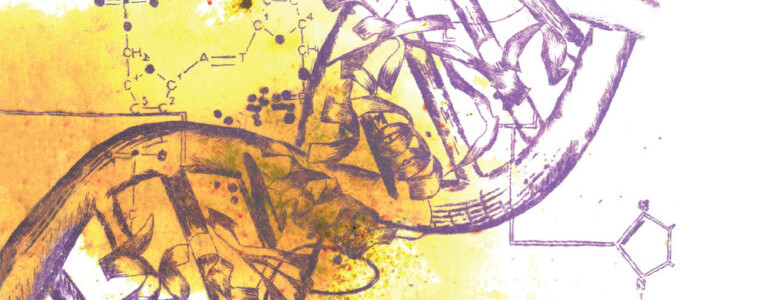In order to support implementation of the PDB Art project, we have created and collated a number of resources to support teaching of the basic scientific concepts around proteins and molecular structure. All these resources are free to use, though you should credit anything shared from these resources.
Guidance in running the project
Science in School 'Teach' Article
This 'Teach' article at the Science in School magazine describes how the PDB Art project is run and how teachers can get involved with the project. The article includes an outline of the project lifecycle, highlights resources available to support teachers, and gives a case study from a school involved in the project.
Bringing the beauty of proteins to the classroom: the PDB Art Project
Inktober 2023 by Irina Bezsonova
Jake Parker created Inktober in 2009 as a challenge to improve his inking skills and develop positive drawing habits. It has since grown into a worldwide endeavor with thousands of artists taking on the challenge every year.
In October 2023 Irina Bezsonova, Associate professor UCONN Health and part-time artist, took up the challenge with a focus on protein structures. Previously, in October 2021, Irina had also taken up the Inktober challenge, leading to the creation of a wonderful virtual exhibition of her artworks, put together by PDBe.
We are delighted to share Irina's 2023 Inktober artworks here to celebrate this work and provide inspiration to aspiring scientific artists!
View the Inktober 2023 artworks by Irina Bezsonova
Worksheets and activities
Function finders activity

This activity, from the team at yourgenome, helps introduce the concept how DNA codes proteins. These materials challenges students to decipher the protein sequence from the given DNA code and use this to identify their specific protein. The related materials then provide the students with some specific information about the function of the protein and how to view the structure in the 3D viewer at PDBe.
Relevant links to the materials are below:
Function Finders homepage at yourgenome
Introductory video - 'From DNA to protein'
Function finders protein profiles - these also include URLs to view the structures in 3D in your web browser on any device. This is a much easier process than using the Rasmol software described in the teachers notes.
Pinterest activity
The PDB Art Pinterest account (see more below) can be really helpful for inspiring students to find really interesting scientific topics and examples. We have created a short worksheet for guidance on access and navigation of the PDB Art Pinterest page which is available below.
Download PDB Art Pinterest activity
View the PDB Art Pinterest account
PDBe website activity
An introduction to using the PDBe website to find protein structures, using the PDBe search pages and the 3D viewer.
Download the PDBe website activity
Lesson plans from Thomas Gainsborough School
In implementing the project, Thomas Gainsborough School have created lesson plans for both science and art lessons and have kindly offered these for others to use and adapt. Mr Edward Clark, Assistant Headteacher of the
Creative Arts, worked with Mr Andrew Cameron, science teacher and leader of STEM curriculum, to develop a comprehensive plan for implementation of the project. This included dedicated science lessons, with interactive sessions using physical modelling kits, through to art lessons, which built upon the science learning to inspire creation of artworks.
Year 7/8 lesson plan - includes learning outcomes, activity outlines and resource list.
Video tutorials from PDBe
"Proteins"
Our "Proteins" talk gives a very general introduction to what proteins are, what jobs they do, and why understanding their structure is important.
Featured structure articles
The PDBe team write monthly featured articles that describe the scientific background behind the structures depicted in PDB artworks. These articles are written to be accessible to non-specialists, though may be advanced for school-level age groups.
These articles include topics such as:

Haemoglobin - the protein that carries oxygen around your bloodstream.
|
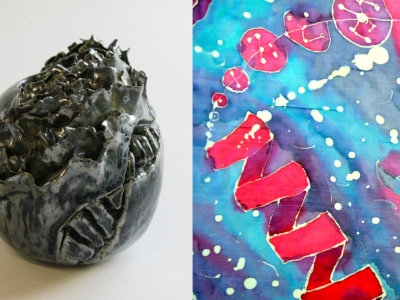
Ribosome - the protein complex that is used to make all the other proteins in your cells.
|

Rhodopsin - the protein that senses light at the back of your eye.
|
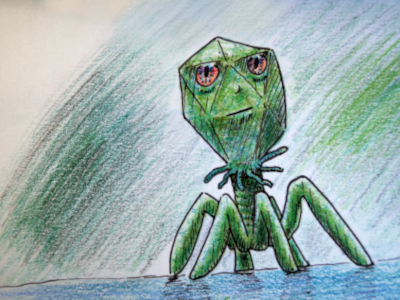
Bacteriophage - a virus that infects and kills bacteria.
|
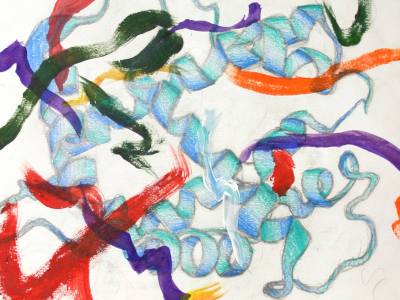
Myoglobin - the first protein structure to ever be determined.
|

CRISPR Cas9 - a protein that allows the modification of DNA for genome editing.
|
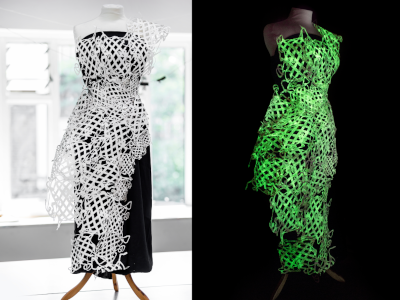
Green Fluorescent Protein (GFP) - a protein from jellyfish which glows green and is used by scientists to help see inside cells.
|
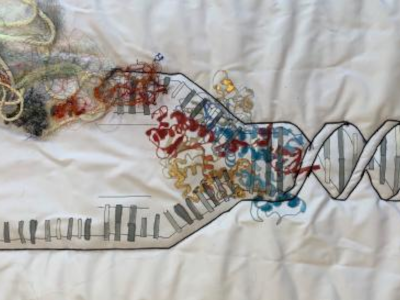
DNA replication machinery - the process of making an identical DNA is known as replication and is one of the most fundamental processes that occurs within a cell.
|
View all the featured articles
External resources
We have gathered some related external resources which may be helpful for people running the project.
- Crystallography video from Royal Institution - an overview of the technique of X-ray Crystallography, which has been used for determining the majority of structures in the PDB.
- Electron Microscopy video from MRC-LMB - an explanation of the technique of electron microscopy (cryoEM), which is increasingly used to determine structures of proteins and their complexes.
- Molecular AR for mobile devices - a website that allows users to view PDB structures in Augmented Reality (AR) within a browser on their tablets or mobiles.
- MSOE resources for teaching and students - both physical and theoretical resources developed to support teaching of protein structure, particularly using 3D modeling kits (see below).
- Cell size and scale - an interactive online viewer that helps illustrate the size of cells and proteins relative to other known components.
- World of Molecules - highlights roles of various molecules in different areas of science and society.
- Superstruct - an app-based puzzle that involves fitting individual puzzle pieces (proteins) together to solve their protein complex structure.
Center for BioMolecular Modeling kits
The Center for BioMolecular Modeling (CBM) develops materials that bridge the gap between the research laboratory and the educational classroom. They believe that the invisible world of molecules becomes real when students have an opportunity to hold physical models in their hands. The physical models function as thinking tools that stimulate questions that are then addressed using computer visualization tools and activities.
At PDBe, we have a selection of these kits from the CBM available to lend out, though availability varies depending on demand.
These include:
- Water Kit
- Enzymes in Action Kit
- Substrate Specificity Kit
- Flow of Genetic Information Kit
- Amino Acid Starter Kit and Protein-Folding Kit)

